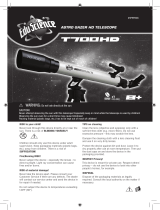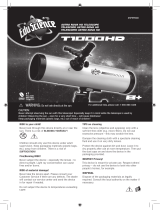
2
DE
Besuchen Sie unsere Website über den
folgenden QR Code oder Weblink um weitere
Informationen zu diesem Produkt oder die
verfügbaren Übersetzungen dieser Anleitung
zu nden.
EN
Visit our website via the following QR
Code or web link to nd further information on
this product or the available translations of these
instructions.
FR
Si vous souhaitez obtenir plus
d’informations concernant ce produit ou rechercher
ce mode d’emploi en d’autres langues, rendez-vous
sur notre site Internet en utilisant le code QR ou le
lien correspondant.
NL
Bezoek onze internetpagina via de vol-
gende QR-code of weblink, voor meer informatie
over dit product of de beschikbare vertalingen van
deze gebruiksaanwijzing.
IT
Desidera ricevere informazioni esaustive
su questo prodotto in una lingua specica? Venga
a visitare il nostro sito Web al seguente link (codi-
ce QR Code) per conoscere le versioni disponibili.
ES
¿Desearía recibir unas instrucciones de
uso completas sobre este producto en un idioma
determinado? Entonces visite nuestra página web
utilizando el siguiente enlace (código QR) para ver
las versiones disponibles.
PT
Deseja um manual detalhado deste
produto numa determinada língua? Visite a nossa
Website através da seguinte ligação (QR Code)
das versões disponíveis.
DK
Ønsker du en udførlig vejledning til dette
produkt på et bestemt sprog? Så besøg vores
website ved hjælp af følgende link (QR-kode) for
tilgængelige versioner.
PL
Prosimy więc odwiedzić naszą stronę,
korzystając z tego linku (QR Code), aby zapoznać
się dostępnymi wersjami.
CZ
Přejete si podrobný návod k produktu
v určitém jazyce? Pak navštivte naši webovou
stránku přes následující odkaz (QR Code) a
zjistěte, zdali máme Vámi požadovanou verzi k
dispozici.
SE
Önskar du en utförlig anvisning för den här
produkten på ett visst språk? Besök i så fall vår
webbsajt via följande länk (QR-kod) för tillgängliga
versioner.
FI
Haluatko tuotteen täydellisen ohjeen
tietyllä kielellä? Käy silloin sivustossamme, jossa
ovat saatavilla olevat versiot. Käytä seuraavaa
linkkiä (QR Code).
SK
Chceš podrobné pokyny pre tento
produkt v konkrétnom jazyku? Potom navštívte
naše webové stránky prostredníctvom odkazu
uvedeného nižšie (QR kód) dostupné verzie.
RU
Вам требуется подробная инструкция на
это изделие на определенном языке? Проверьте
наличие соответствующей версии инструкции,
посетив наш сайт по этой ссылке (QR-код).
MANUAL DOWNLOAD:
www.bresser.de/download/NGKids/Telescopes
MANUAL DOWNLOAD:























